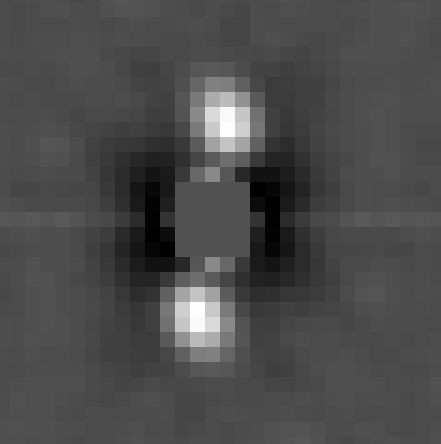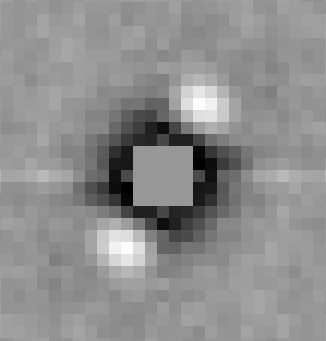Two Infinities
Mon, 12 Dec 2022
Edging Below Half an Arcsecond Double Star Separation
Looking at double star HLD4, discovered in 1881 by E. S. Holden, I got a reasonable estimate of separation (ρ) of 0.48 arcseconds. Besides what appeared to be good viewing on November 17, 2022, it seems it helped to increase the number of exposures from my typical 400 to 800. Since HLD4 is a closely matched relatively bright pair of stars, the speckle diagram was obtained from exposures taken at 0.005 seconds each.

Next, I Turned to a more challenging, dimmer pair, HU1076 discovered by William Hussey in 1904 with magnitudes 10.5 and 12.0. I obtained this specklegram:

I calculated the separation to be 0.53 arseconds, probably 0.09 arseconds wide of the mark. A more accurate measurement might be obtained with more exposures. A more careful look at signal-to-noise ratio may also be in order. It was interesting that a definitive specklegram could only be obtained for a narrow estimate of noise. For in computing the specklegram, I needed to threshold the data at 38 count minimum, this when star pixel maxima might be around 45-49. It was also necessary to threshold no higher than 40 in order to obtain a definitive specklegram.
posted at: 23:53 | path: | permanent link to this entry
